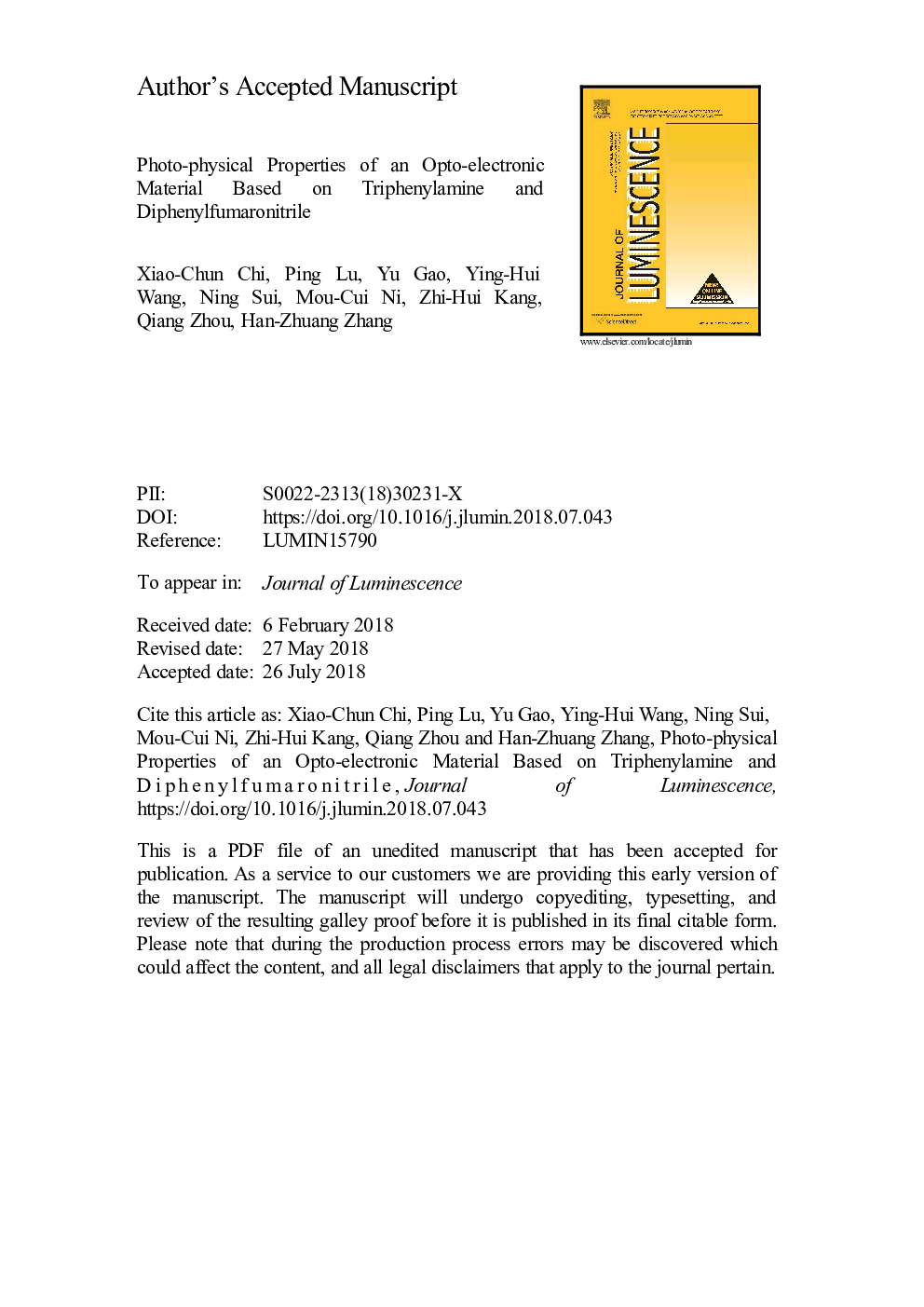| Article ID | Journal | Published Year | Pages | File Type |
|---|---|---|---|---|
| 7839689 | Journal of Luminescence | 2018 | 21 Pages |
Abstract
A Donor-acceptor (D-Ï-A) type near-infrared fluorescent compound 2,3-is(4â²-diphenylamino)â1,1â²-biphenyl] â4-l) fumaronitrile (TPATCN) is fully characterized in a mono-disperse system as well as in film. Transient absorption (TA) data showed that intramolecular charge transfer (ICT) processes exist in the mono-disperse TPATCN molecule, and the corresponding transfer velocity is accelerated by solvent polarity. The energy transfers from the excited TPATCN to the surrounding polar solvent molecules via solvent cage effects based on dipole-dipole interactions. The TA data also showed that the exciton relaxation process involves the exciton-exciton annihilation (EEA) in the TPATCN film. The EEA replaces the ICT process for the mono-disperse system in the TPATCN film. The distance between single exciton and the EEA among excitons after exciton generation are estimated to be 7.8â¯Ã
and 356.8â¯Ã
, respectively. The former is much smaller than the size of a single TPATCN (28.3â¯Ã
) indicating that the intermolecular exciton is formed after photo-excitation in the TPATCN film. The latter is about 46 times that of a singel exciton, suggesting that the nature of EEA depends on the long-range interaction based on an electric filed. Moreover, the EEA process depends not only the distance among exciton after exciton generation but also the percentage of exciton participating in the EEA process in the whole exciton population.
Related Topics
Physical Sciences and Engineering
Chemistry
Physical and Theoretical Chemistry
Authors
Xiao-Chun Chi, Ping Lu, Yu Gao, Ying-Hui Wang, Ning Sui, Mou-Cui Ni, Zhi-Hui Kang, Qiang Zhou, Han-Zhuang Zhang,
